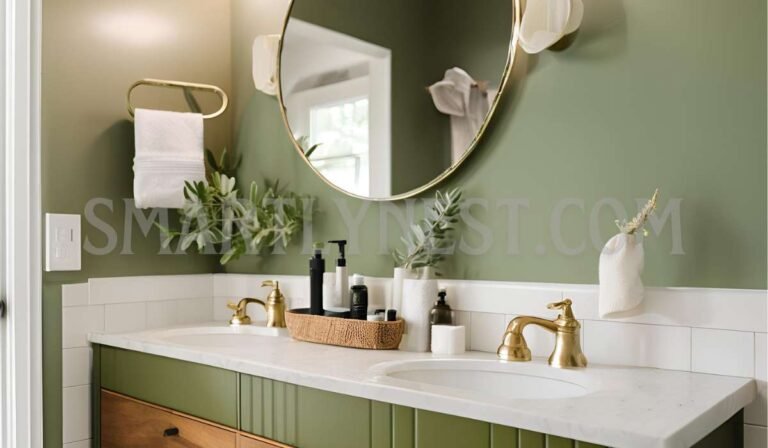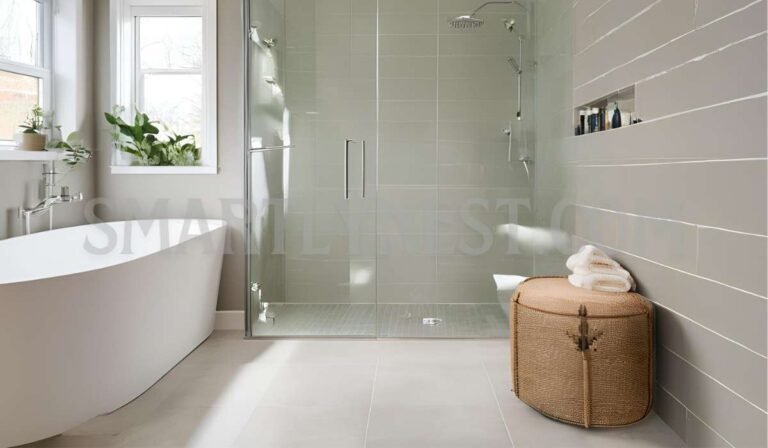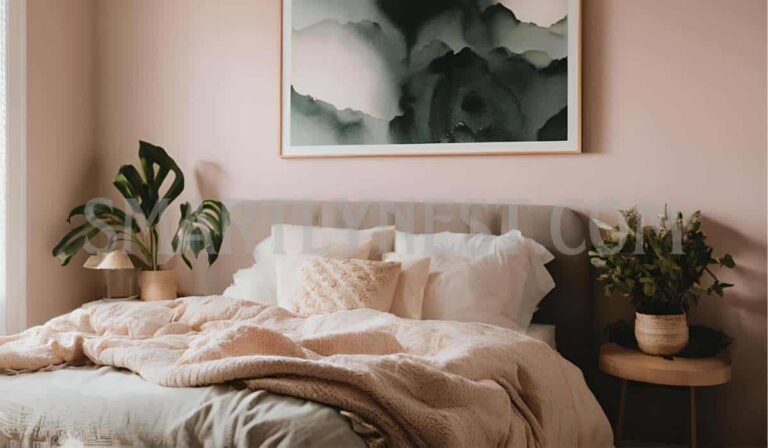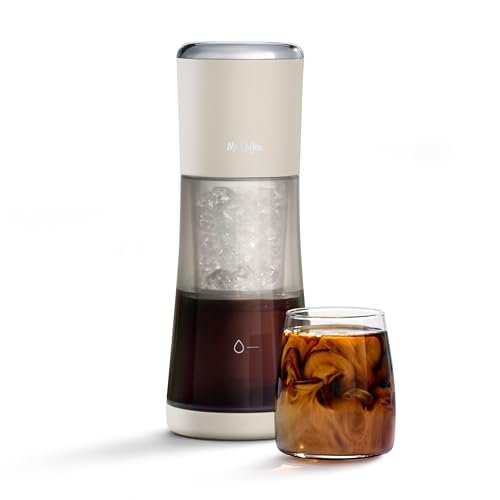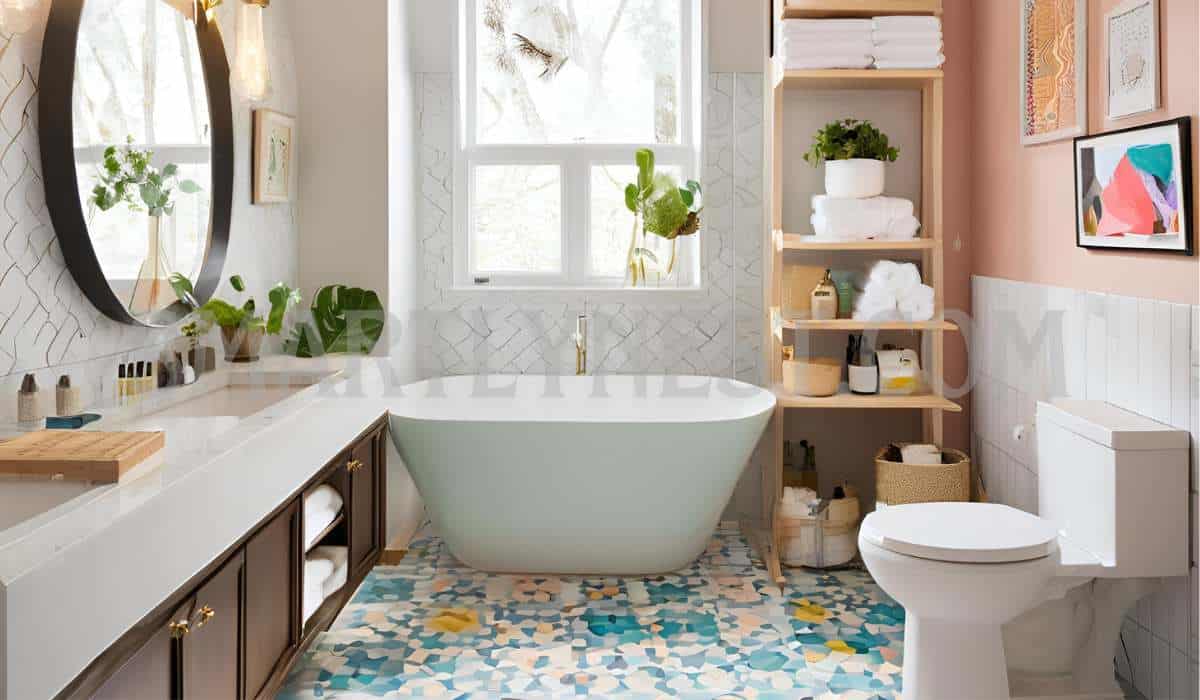
Small bathrooms can feel cramped, uninspiring, and often less functional than you’d like. However, with the right design strategies and a little creativity, even the smallest of bathrooms can be transformed into stylish, functional spaces that are both efficient and visually appealing. Whether you’re tackling a tiny powder room or a cramped full bathroom, these 15 small bathroom design ideas will help you maximize your space and infuse some personality into your space.
The Struggle of Small Spaces
A small bathroom can pose several challenges. Limited space often means sacrificing essential storage or struggling to make everything fit in a compact area. This can create an overwhelming feeling, and you may find yourself wishing for a more spacious environment. However, these constraints also present an opportunity for thoughtful design, where every inch counts.
The goal is not just to create a functional bathroom but to craft a space that feels open, organized, and aesthetically pleasing. With the right choices in terms of layout, furniture, lighting, and color schemes, you can turn your small bathroom into a personal retreat.
Why Smart Design Matters?
Smart design can make all the difference in a small bathroom. It allows you to maximize storage, create a sense of space, and bring in a modern or classic aesthetic without feeling overcrowded. Rather than focusing on the limitations of the space, think about how to make the best use of the available area. This approach will help transform a cramped bathroom into a beautiful and functional space you can enjoy.
15 Genius Small Bathroom Design Ideas to Maximize Space and Style
1. Install Floating Shelves
One of the most effective ways to utilize vertical space in a small bathroom is by installing floating shelves. These sleek, modern shelves give you extra storage while also contributing to a minimalist and clean aesthetic.
Benefits of Floating Shelves
- Maximized Vertical Space: By placing storage on the walls, you free up valuable floor space.
- Visual Lightness: Floating shelves appear to “float” because they don’t have visible legs or support beams. This lightens the space visually.
- Versatility: They can hold anything from towels and toiletries to decorative items, making them a perfect multi-functional addition.
Design Tips
- Material Choices: Opt for materials that blend with your existing bathroom design, whether it’s wood, glass, or metal.
- Placement: Place shelves above the toilet, along unused wall spaces, or even above the sink to store essentials without sacrificing floor space.
2. Opt for Wall-Mounted Fixtures
Wall-mounted fixtures are a fantastic way to save space while creating a more streamlined and modern look. They are especially useful in smaller bathrooms where every inch counts.
Wall-Mounted Toilets
Wall-mounted toilets are becoming increasingly popular due to their sleek look and the ability to free up floor space. These toilets are attached to the wall with the tank hidden behind the drywall, leaving more floor space open.
- Pros: A cleaner, more modern look and easy cleaning underneath the toilet.
- Cons: Installation can be more expensive and requires solid wall support.
Wall-Mounted Faucets
Wall-mounted faucets are another smart space-saving feature. They eliminate the need for bulky countertop faucets and give the sink area a cleaner, more open appearance.
- Pros: A minimalist, modern look and more counter space for your bathroom essentials.
- Cons: Requires precise plumbing installation and may be harder to maintain.
3. Use a Pedestal or Console Sink
Rather than opting for a bulky vanity, consider a pedestal or console sink. These options not only save space but also contribute to a more open and airy feel in the room.
Pedestal Sinks
Pedestal sinks have been a classic choice for small bathrooms for years. Their slender profile and lack of cabinetry below help open up the space and create a sense of roominess.
- Pros: Easy to install and maintain, great for tight spaces.
- Cons: Limited storage options, as there is no under-sink storage.
Console Sinks
Console sinks are similar to pedestal sinks but feature a more modern, open-leg design. They can provide more space for storage baskets underneath while maintaining the minimalist look.
- Pros: Adds a touch of sophistication while providing extra room beneath.
- Cons: Less countertop space than traditional vanities, and limited storage.
4. Embrace Recessed Storage
Recessed storage is a clever design trick that takes advantage of the space inside the walls. This solution allows you to keep your bathroom essentials hidden away while maintaining a clean, uncluttered look.
Recessed Shelving
By installing shelving inside the walls, you gain valuable storage space without taking up any floor or countertop area. This is perfect for storing toiletries, towels, and other small items.
- Pros: No need for bulky furniture or shelves taking up valuable space.
- Cons: Requires careful planning and installation during the remodeling phase.
Shower Niches
A recessed shower niche can store shampoo, soap, and other shower essentials without cluttering the space. Installing these directly into the wall provides easy access and a tidy look.
- Pros: Clean, minimal look; helps free up space in the shower.
- Cons: Installation can be tricky in existing bathrooms without major renovation.
5. Incorporate Large Mirrors
Mirrors are essential in any bathroom, but in a small space, they serve an additional purpose. Large mirrors can reflect light and give the illusion of a bigger, more expansive room.
Benefits of Large Mirrors
- Illusion of Space: A large mirror makes the space appear much larger by reflecting both light and the rest of the room.
- Brightens the Room: Mirrors reflect natural and artificial light, brightening the room and making it feel more inviting.
Design Tips
- Full-Length Mirrors: Consider installing a mirror that covers an entire wall or a mirror with integrated lighting.
- Frameless Designs: Opt for frameless mirrors for a seamless, modern look.
6. Choose a Compact Bathtub or Shower
While bathtubs can make a bathroom feel luxurious, in a small space, choosing a compact version can work wonders. If you prefer a shower, corner showers are an excellent choice to save space while providing all the functionality you need.
Small Bathtubs
Compact bathtubs, such as deep soaking tubs or shorter versions, provide relaxation without compromising on space.
- Pros: Great for a spa-like experience in small spaces.
- Cons: May not be practical for families with young children.
Corner Showers
Installing a corner shower with a curved glass enclosure can help maximize the bathroom’s square footage while offering a spacious showering experience.
- Pros: Perfect for maximizing corner space, provides a spacious feel despite being compact.
- Cons: May not work well for larger or shared bathrooms.
7. Add Sliding or Pocket Doors
Traditional doors that swing open can take up valuable space, especially in smaller bathrooms. Instead, opt for sliding or pocket doors to maximize the space around the doorway.
Benefits
- Space-Saving: Sliding and pocket doors don’t require extra space to open, making them ideal for tight bathrooms.
- Modern Look: These doors add a sleek, contemporary feel to the space.
8. Use Light, Neutral Colors
Light colors are known for making small spaces feel larger and more airy. Soft whites, creams, and light pastels open up the space and reflect light, creating a welcoming atmosphere.
Benefits of Light Colors
- Openness: Lighter hues create a sense of openness and airiness in cramped spaces.
- Timeless Appeal: Neutral tones never go out of style, making them ideal for long-term bathroom designs.
Design Tips
- Subtle Accents: Add pops of color through accessories or accent tiles.
- Light Flooring: Pair light-colored walls with light tiles for a seamless, open look.
9. Install Glass Shower Doors
Instead of using bulky shower curtains or opaque glass, opt for clear glass shower doors. These help the bathroom feel more open by removing visual barriers.
Benefits
- Open Feel: Glass doors create a sense of flow, especially in smaller bathrooms.
- Easy to Clean: Glass is easier to clean than fabric shower curtains and doesn’t trap mold or mildew.
Design Tips
- Frameless Glass Doors: Frameless designs add a sleek, modern touch while making the space feel larger.
- Shower Screens: For even less visual intrusion, a shower screen may be a better option than full glass doors.
10. Utilize Over-the-Toilet Storage
The space above your toilet is one of the most underutilized areas in a bathroom, but it can be an excellent storage solution in small bathrooms. Adding shelves, cabinets, or even a decorative unit above the toilet can help store toiletries, towels, and other essentials, freeing up valuable floor space for other uses.
Types of Over-the-Toilet Storage
- Over-the-Toilet Shelving Units: These freestanding units typically feature a combination of open shelves and closed cabinets. They provide space for storing extra toilet paper, toiletries, towels, or decorative items like plants or candles.
- Wall-Mounted Cabinets: For a more streamlined look, opt for wall-mounted cabinets that fit snugly above the toilet. These can be used to store smaller items like cleaning supplies, extra shampoo, or cosmetics, keeping them out of sight while still easily accessible.
- Floating Shelves: Floating shelves above the toilet are a more minimalist option that allows you to store and display smaller items like folded towels, baskets, or decorative accents.
Benefits of Over-the-Toilet Storage
- Maximizes Vertical Space: By taking advantage of the vertical space above the toilet, you free up floor area for other functional uses, such as additional seating or a more spacious layout.
- Organized and Clutter-Free: By storing bathroom essentials out of sight, you reduce clutter and create a cleaner, more organized environment.
- Easy Access: The items stored above the toilet are still within easy reach for daily use, so you don’t sacrifice convenience for style.
Design Tips
- Measure Carefully: Be sure to measure the space above your toilet accurately before purchasing any storage units to ensure a proper fit.
- Material Coordination: Choose materials and colors that match the rest of your bathroom design. For example, if you have a modern, sleek bathroom, opt for stainless steel or glass shelves. For a more traditional bathroom, consider wooden units with a vintage finish.
- Use Baskets for Neatness: Baskets can help keep smaller items organized and visually appealing, especially on open shelves. Use baskets to group similar items together, such as toilet paper, cleaning products, or extra soaps.
11. Opt for Multi-Functional Furniture
In a small bathroom, every piece of furniture must do double duty. Multi-functional furniture pieces help maximize storage and improve the overall organization.
Vanities with Storage
Traditional vanities may take up too much space in a small bathroom, but a vanity with built-in storage can save you room and reduce clutter. Look for designs with drawers, shelves, or hidden compartments to store toiletries, cleaning supplies, and extra towels.
- Pros: Combines essential furniture and storage in one piece.
- Cons: Can be more expensive depending on the design.
Foldable or Extendable Items
Another smart idea is to use foldable or extendable items, such as a fold-down bench for added seating or an extendable mirror for better views when needed. These items can be tucked away when not in use, creating more space in your bathroom.
- Pros: Space-saving, practical for both functionality and comfort.
- Cons: May require careful installation, especially in a small space.
12. Incorporate Smart Lighting
Lighting is a key factor in creating the right ambiance in any bathroom, especially small ones. Proper lighting can make a room feel bigger, brighter, and more welcoming. Smart lighting solutions, such as layered lighting, are perfect for small spaces.
Layered Lighting
Instead of relying on one light fixture, layer different types of lighting to create a warm, inviting environment. You can combine ambient lighting (overhead), task lighting (for mirrors or the shower area), and accent lighting (for decorative elements).
- Pros: Provides adequate light for every need while creating a cozy atmosphere.
- Cons: Can require more planning to ensure the right mix of lighting types.
LED Lighting
LED lights are energy-efficient, long-lasting, and versatile. Consider using LED strips around the mirror, along the floorboards, or under cabinets to enhance the bathroom’s overall look. LED lighting also adds a modern, sleek touch to small bathrooms.
- Pros: Efficient, provides bright light with minimal energy usage.
- Cons: Initial installation cost can be higher, depending on the setup.
13. Play with Textures and Patterns
Adding texture and pattern is a great way to inject personality and style into a small bathroom. However, it’s important not to overwhelm the space, so balance is key.
Textured Tiles
Textured tiles, such as those with raised patterns or unique finishes, add depth and dimension to your bathroom. Use them as a feature wall behind the sink, shower, or bath, or for the floor to create a focal point.
- Pros: Adds visual interest and personality without overwhelming the room.
- Cons: Can be tricky to clean, especially in the shower area.
Patterned Wallpapers
Wallpaper with subtle patterns can be used in smaller doses to create a chic, trendy look. Consider wallpapering just one wall or using it above the backsplash area.
- Pros: Adds personality without taking up floor space.
- Cons: Moisture in bathrooms can cause wallpaper to peel or warp, so choose moisture-resistant options.
14. Maximize Corner Space
Corners are often neglected in small bathrooms, but they can be valuable areas for adding storage or fixtures. Utilizing corner space helps maximize every square inch of your bathroom, allowing you to create more room for other activities.
Corner Sinks
If you have limited counter space or floor area, installing a corner sink can help free up valuable space. Corner sinks can fit into tight spaces without compromising on functionality.
- Pros: A great option for small bathrooms with an awkward layout.
- Cons: May feel less spacious if not designed correctly or if the sink is too small.
Corner Cabinets or Shelves
In addition to a corner sink, you can add corner cabinets or floating shelves. These help store items out of sight while making use of otherwise wasted space.
- Pros: Space-saving and offers extra storage.
- Cons: Requires careful planning to avoid crowding the corner.
15. Keep the Floor Clear
In a small bathroom, keeping the floor clear and open helps the space feel more expansive. Reducing visual clutter will make the bathroom appear larger and more organized.
Wall-Mounted Storage
Wall-mounted shelves, hooks, and cabinets allow you to store your bathroom essentials off the floor. This opens up the space and gives the room a more spacious, airy feel.
- Pros: Keeps the bathroom neat and visually spacious.
- Cons: Wall space must be utilized effectively to avoid crowding.
Freestanding Items
While it’s important to keep the floor open, some freestanding pieces, like a small stool or a decorative basket, can add both style and functionality without overwhelming the space. However, limit these to essential pieces only.
- Pros: Adds a cozy, personalized feel to your bathroom.
- Cons: Too many freestanding items can clutter the space, so use sparingly.
Writer’s Opinion
Small bathrooms have the potential to be functional, efficient, and incredibly stylish. The key is making design decisions that embrace the space’s limitations and turn them into opportunities. By focusing on multi-functional pieces, maximizing vertical storage, and utilizing clever design tricks such as mirrors and recessed shelves, you can create a bathroom that feels much larger than its actual size.
The combination of minimalist design, light color schemes, and space-saving fixtures allows a small bathroom to become a calming, functional retreat. With these 15 design ideas, you can transform even the smallest bathroom into a well-organized and stylish oasis.
FAQs
What is the best color scheme for a small bathroom?
Light colors such as whites, creams, and light grays are ideal for small bathrooms. These shades make the space feel larger and brighter. You can add accent colors through accessories, towels, or shower curtains for a touch of personality.
How can I make a small bathroom feel bigger?
To make your small bathroom feel larger, opt for large mirrors, glass shower doors, and light color palettes. Keep the floor open with wall-mounted fixtures and storage, and use recessed shelves for added storage without crowding the space.
Are wall-mounted toilets worth it?
Yes! Wall-mounted toilets save floor space and make the bathroom appear cleaner and more modern. They also make it easier to clean underneath. However, installation can be more expensive and may require structural changes to the wall.
Can I use dark colors in a small bathroom?
While dark colors can work in a small bathroom, it’s best to use them sparingly. Dark shades can be great for accent walls, but balance them with lighter tones to prevent the space from feeling too enclosed or cramped.
What flooring works best for small bathrooms?
Light-colored tiles, large-format tiles, or even light wood planks are perfect for small bathrooms. Consistent flooring without excessive grout lines can help create a seamless look that visually expands the space.
Conclusion
Transforming a small bathroom doesn’t require extensive renovations or a huge budget. By carefully selecting the right furniture, fixtures, and design elements, you can make the most of your space while creating a stylish, functional environment. From clever storage solutions to modern fixtures, the ideas presented in this guide are just the starting point. With a little creativity and planning, your small bathroom can become an organized and beautiful sanctuary that you’ll enjoy every day.

